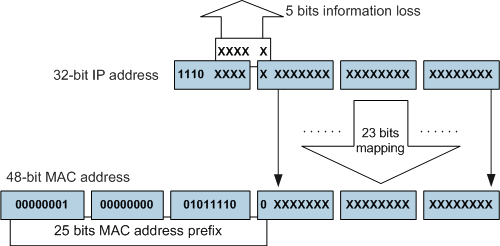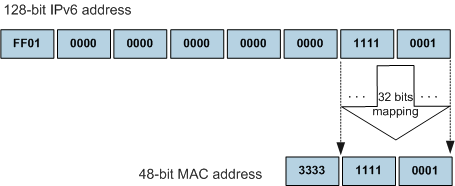Overview of Multicast MAC Addresses
When unicast IP packets are transmitted on an Ethernet network, destination MAC addresses encapsulated in the packets at the link layer are the receiver MAC addresses. However, the destination of a multicast data packet is a group with changeable members and not a fixed receiver. Therefore, multicast data packets must use multicast MAC addresses at the data link layer. As defined in the IEEE 802.3 standard, the least significant bit in the most significant octet of a MAC address is the multicast bit. The value 1 of this bit indicates a multicast MAC address. The broadcast MAC address 0xFFFF-FFFF-FFFF can be taken as a special type of multicast MAC address.

As defined by the IANA, the leftmost 24 bits of an IPv4 multicast MAC address are 0x01005E, the 25th bit is 0, and the rightmost 23 bits are mapped to the rightmost 23 bits of a multicast IPv4 address, as shown in Figure 2. For example, if the IPv4 multicast address of a group is 224.0.1.1, the IPv4 multicast MAC address of this group is 01-00-5E-00-01-01.
In an IPv6 multicast MAC address, the leftmost 16 bits are 0x3333 and the rightmost 32 bits are mapped to the rightmost 32 bits of an IPv6 multicast address. Figure 3 shows the mapping between IPv6 multicast address 0xFF01::1111:1 and an IPv6 multicast MAC address.

